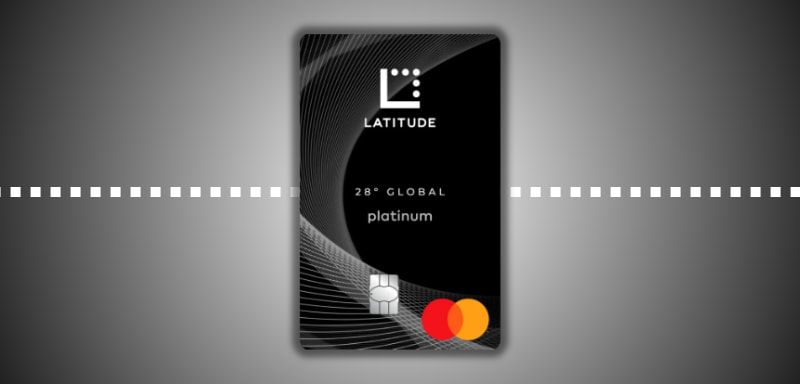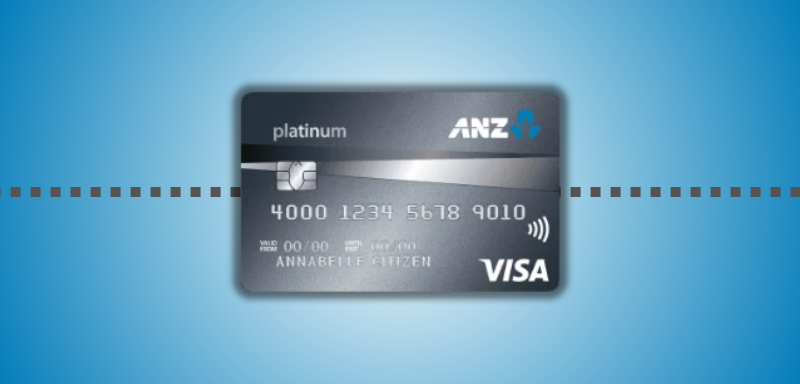Small Business Financing
Different Types of Small Business Loans Explained
Get a clear breakdown of small business loans including term, SBA, bank, equipment, and alternative financing so you can pick the right funding for your business needs today.
Advertisement

If you’ve ever tried to grow a business, you know there’s a moment when extra cash could change everything. People search for business loans when personal savings won’t cut it and opportunities are knocking.
Understanding business loans matters because each option opens different doors for entrepreneurs. The right type could support hiring, marketing, or covering slow months, while the wrong one piles on stress and debt.
This guide dives into the different business loans available, explains how each works, and gives clear, no-nonsense advice. Stick around to find the best fit for your business goals and needs.
Identifying the Main Loan Categories for Small Businesses
Knowing the categories of business loans gives you confidence from day one. These categories determine your choices, what paperwork to gather, and who you’re dealing with.
Lenders offer secured and unsecured business loans, working capital lines, equipment financing, merchant cash advances, and alternative funding. Let’s break down what sets each apart—before you waste time applying the wrong way.
Secured Business Loans in Practice
Secured business loans require you to pledge assets—think buildings, vehicles, or inventory. Lenders reduce their risk this way, offering lower rates. The catch: default, and your pledged property is at stake.
For example, a restaurant owner might use their kitchen equipment as collateral. This means if monthly payments stop, the bank claims the appliances—so weigh this risk before moving forward.
Secured loans suit borrowers with valuable assets who want better terms. Approach these after reviewing your balance sheet and thinking about what you can afford to lose.
Unsecured Business Loans Explained
Unsecured business loans don’t need you to put up property or inventory. Lenders review your credit, business plan, and financials instead. The trade-off? You get higher rates and tighter terms.
Picture a consultant seeking $25,000 for marketing. They’d submit tax returns and sales projections—no equipment required. The loan relies on trust and numbers, not physical goods.
Unsecured options suit those with strong personal or business credit, or who lack assets for collateral. Budget carefully: missing payments can still damage your credit and limit future financing.
| Loan Type | Main Requirement | Risk to Business | Best Use Case |
|---|---|---|---|
| Secured Loan | Collateral | Asset loss possible | Buying inventory |
| Unsecured Loan | Good credit | Higher payments | Covering payroll |
| Equipment Financing | Equipment as collateral | Repossession risk | Purchasing machinery |
| Invoice Financing | Unpaid invoices | Reduced revenue | Smoothing cash flow |
| Merchant Cash Advance | Card sales history | Future earnings reduced | Immediate working capital |
Evaluating Term Loans vs. Revolving Credit Choices
Choosing between term loans and lines of credit changes how you manage business funding. Each gives you access to cash, but the way you repay—and when you borrow—differs significantly.
Term business loans grant one lump sum with fixed repayment dates, while revolving credit lets you withdraw, repay, and redraw funds as needed. Your business model decides which is smarter.
Term Loan Flexibility and Limitations
Term loans bring structure and predictability, making them ideal for planned projects. Say you want to renovate your shop. A five-year term loan covers the upfront cost and makes budgeting for repayments easy.
- Request the right amount: Estimate your project’s cost precisely to avoid borrowing too little or paying for excess.
- Negotiate loan term: Align repayment years with your project’s expected payout timeline, such as matching equipment lifespan to loan maturity.
- Watch out for prepayment penalties: Make sure early repayment won’t cost you extra if your business thrives and you want to finish sooner.
- Ask about fixed vs. variable rates: Fixed rates bring payment certainty; variable can mean lower initial costs but potential spikes.
- Track all repayments: Use accounting tools or set reminders to avoid missed deadlines—prompt payment builds trust with lenders.
Consider a term loan when your plan is clear and you value predictable costs. Work with a lender who answers questions directly and explains all fees upfront.
When to Choose a Business Line of Credit
Revolving business lines of credit function like a credit card. Use what you need, repay, and access funds again—ideal for handling busy and slow seasons without new loan applications each time.
- Set your credit limit wisely: Calculate average monthly shortfalls and use that to pick your maximum.
- Use for recurring expenses: Pay for inventory, payroll, or surprise repairs, then repay when customers pay you back.
- Make minimum payments: Always pay at least the minimum required to keep your credit line open and fees low.
- Monitor draws and repayments: Schedule regular reviews to avoid maxing out your credit line unintentionally.
- Keep credit utilization low: Using too much can lower your business credit score—aim for less than 30 percent of the limit.
Business lines of credit excel for owners who juggle bill cycles or unpredictable revenue. Timely repayments protect your credit and ensure continuous access to needed funds.
Spotting Key Differences in SBA Loans and Bank Loans
SBA loans and traditional bank loans can both supply business loans, but their terms, guarantees, and qualifying processes differ. Sorting out these factors upfront saves time and frustration when applying.
If your business needs long repayment periods and easier approval, the SBA’s government-backed loans are engineered for stability. Banks, meanwhile, move faster for those who meet tough standards.
Understanding the SBA Loan Application Journey
Applying for SBA business loans means assembling financial paperwork, writing business plans, and working with approved lenders. Expect background checks and analysis that dig into your business credit profile.
SBA loans offer long terms, low down payments, and capped interest rates—delivering peace of mind for owners with limited capital. Read every document, as government guarantees come bundled with strict compliance rules.
Allow a few weeks for processing and anticipate follow-up questions. Professional, accurate documentation makes approval more likely—and builds your reputation with future lenders, too.
Bank Loan Speed and Stringency
Traditional business loans from banks require strong financials, established revenue, and significant credit history. Application review times are short, but approval odds drop if you lack experience or collateral.
Banks work best for businesses showing two or three years of steady profits. If a banker says, “We need last quarter’s statements and proof of cash flow,” deliver these quickly to improve your chances.
Bank loans are usually faster for simple cases but disappear if your records are incomplete. Responding swiftly turns application reviews into partnerships for future, bigger funding rounds.
Pinpointing Equipment and Invoice Financing Opportunities
Equipment financing and invoice financing both offer business loans tailored to specific needs. Instead of relying on your general credit, these loans let your assets or invoices do the talking for you.
If your company owns valuable equipment or generates big monthly invoices, these options open up fresh streams of working capital without waiting months for client payments.
Equipment Financing in Detailed Steps
With equipment financing, you apply using a quote for machinery, vehicles, or computers. Lenders review your proposal and base loan approval on the asset’s value and projected use.
Repayment terms usually match the asset’s lifespan. For instance, if buying a delivery van expected to last five years, the loan term typically won’t exceed this. Payments align with income generated by the equipment.
Demonstrate the equipment’s return: Detail revenue increases or cost savings from upgrading. This connects your loan ask directly to business growth—lenders love to see that logic.
Breaking Down Invoice Financing
Invoice financing lets you turn unpaid invoices into instant cash. Send copies to a lender, who advances 70–90 percent up front, minus a fee when your client pays up.
This type of business loan prevents cash flow crunches when customers delay payments. Lenders judge risk based less on your company and more on invoice size and client trustworthiness.
Invoice financing frees you to focus on growth, not collections. Use the cash to cover payroll, stock inventory, or hire staff—then repay once invoices clear.
Evaluating Merchant Cash Advances for Quick Capital
Merchant cash advances (MCAs) deliver business loans based on future card sales, paid back daily as customers buy from you. Owners tap this for speed, not price—MCAs cost more, but demand less paperwork.
If your goal is to cover a short-term funding gap, MCAs skip credit checks and heavy scrutiny seen with banks. This fast-paced solution works well for shops processing many daily card transactions.
Using an MCA Responsibly
Treat an MCA as an emergency jumpstart, not as a long-term funding source. Use them to seize timely supplier deals or bridge short payroll gaps, but tally all costs first.
High fees add up: clarify the total repayment amount and repay on time to avoid stacking debt. MCAs make sense for owners who say, “I need funds by Friday, and I’ll pay extra for speed.”
Repayments adjust with daily sales: when receipts peak, more is deducted; when slow, less goes out. This matches cash flow, but be careful—prolonged slumps make MCAs harder to repay.
Navigating Advance Offers and Risks
Review offer terms in writing before signing. Compare daily holdback rates and look for hidden fees, like origination or processing charges. Don’t sign unless you know the full financial impact.
Request a disclosure sheet detailing costs in dollars, not percentages. Ask other business owners how their repayments have affected daily operations—lived experience trumps sales pitches.
Decline advances that demand aggressive repayment terms or refuse to spell out penalties. Every business loans choice has a place, but MCAs need extra double-checking for your peace of mind.
Assessing Alternative Financing Options Beyond Banks
Alternative business loans outside traditional banks have surged thanks to fintech innovation. These include peer-to-peer platforms, online lenders, crowdfunding, and private investors—giving startups flexibility and tailored terms.
Owners choose alternatives to skip slow bank timelines, strict underwriting, and inflexible requirements. The process feels different: shorter applications, less red tape, and results within days, not weeks.
Peer-to-Peer and Online Lending Dynamics
On peer-to-peer networks, you submit your funding needs directly to a pool of individual or institutional investors. After a quick evaluation, money appears in your account, made possible by the collective power of many lenders.
Online lenders, meanwhile, use technology to streamline applications. Submit business details; approvals can pop up within hours. They might request bank statements and tax returns, but the speed outpaces banks.
Choose peer networks if you’re comfortable telling your business story to attract investors. Online lenders work best when speed and simplicity sway your choice over slightly higher borrowing costs.
Crowdfunding and Angel Backing Insights
Crowdfunding brings in cash from future customers and fans, not just institutional lenders. Owners set funding goals and pledge rewards to backers—they get cash, you retain ownership.
Angel investors chase high-potential startups with mentorship and cash. They weigh business plans and teams, then negotiate equity. Be transparent: show your numbers and vision clearly during pitch sessions.
Explore crowdfunding for product launches; angels for scaling ideas. Each option can fit alongside traditional business loans, plugging funding gaps others miss.
Building a Long-Term Strategy for Smart Borrowing
Approaching business loans with a strategic mindset supports growth, not chaos. Integrate funding into your annual business plan and revisit your borrowing approach as your company evolves.
Owners who blend short-term credit lines, term loans, and external investments balance risk while keeping doors open to future opportunities. The key is clear planning and regular check-ins with your financial goals.
Borrowing isn’t just about getting cash—it’s about enabling smarter decisions. Treat loans as tools, not crutches, and loop in your accountant before each new application for reality checks.
Trending Topics

Latitude 28° Global Platinum Mastercard Review: Travel Light, Spend Smart
No international fees, global perks, and free data roaming—see what the Latitude 28° Platinum Mastercard offers.
Keep Reading
MoneyMe Personal Loans Review: Money in your account in 1 minute!
Experience fast, flexible loans with MoneyMe - with easy online application. Check the pros and cons and learn how to apply.
Keep Reading
How to Balance Spending on Credit and Debit
Find the perfect balance between credit and debit cards. Practical tips to control spending, build credit, and use rewards wisely.
Keep ReadingYou may also like

ANZ Platinum Credit Card Review: $300 Cashback!
The ANZ Platinum Credit Card offers a wealth of benefits, from travel insurance to concierge service. See if it’s the right choice for you.
Keep Reading